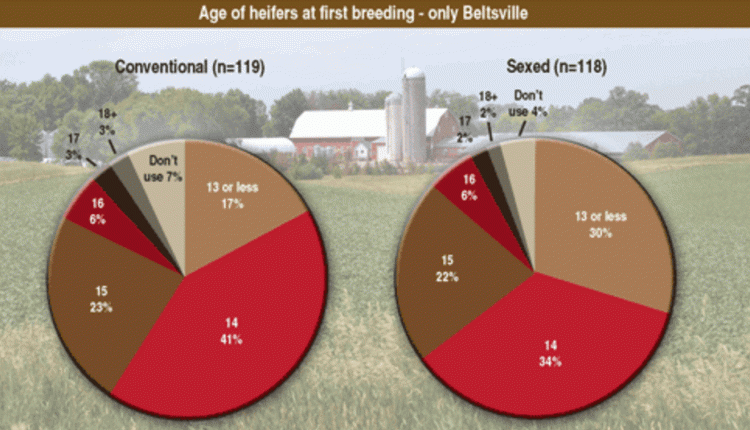
Feed represents the largest cost on most dairy farms, and tremendous resources have been invested in studying ways to improve the feed efficiency of lactating dairy cows. Management strategies such as diet formulation, feed additives, and nutritional grouping can improve the efficiency of feed utilization on the farm. At the population level, genetic selection for traits such as Feed Saved, which was introduced as a selection tool by the Council on Dairy Cattle Breeding nearly five years ago, can be used to improve the feed efficiency of the Holstein breed.
When we introduce a new trait into the breeding program, it is interesting to see what relationships exist with other traits, such as animal behavior. In other words, if we select animals for greater feed efficiency in future generations, how might their behavior change as a consequence? One way to tackle this question is by examining the data from wearable sensors, which allow us to monitor the behavior of individual cows throughout the day.
In a recent study, we measured the physical activity (steps per day) of 635 cows in the University of Florida experimental herd and lying time (minutes per day) of 728 cows in the University of Wisconsin-Madison experimental herd. Daily feed intake was also recorded, on a dry matter basis, over a period of roughly six weeks in mid-lactation. By comparing the actual daily intake of each cow with its energy needs, which were computed from the cow’s milk yield, milk composition, and body size, we calculated the cow’s residual feed intake. Residual feed intake is a commonly used measure of feed efficiency, where animals with negative values eat less feed than expected based on their body size and milk production and are considered efficient, whereas animals with positive values eat more feed than expected and are considered inefficient.

As shown in the figure above, significant relationships were found between sires’ estimated breeding values (EBV) for activity, lying time, and feed efficiency. Sires whose daughters were less active, taking fewer steps per day than their herdmates, tended to have daughters that were also more efficient. On the contrary, bulls whose daughters were more active typically also sired daughters with higher residual feed intake, which meant they were less efficient than their contemporaries. A similar pattern was observed for lying time, where sires whose daughters spent more time lying each day tended to have offspring that were superior for feed efficiency, whereas those whose daughters spent less time lying typically had offspring with poorer feed efficiency. This indicates that a link may exist between feed efficiency and the daily behavior patterns of lactating dairy cows.
Behavior is just one aspect of feed efficiency, and many other known and unknown factors contribute to differences in residual feed intake between families. The biggest challenge in selecting dairy cattle for improved feed efficiency is that measuring the dry matter intake of individual cows every day is incredibly expensive and time consuming, so data collection is limited to research farms, and the reliabilities of genetic predictions are low. Alternative sources of data, such as video cameras and wearable sensors, may allow us to measure proxies for residual feed intake on commercial farms, and this would help improve the accuracy of our selection decisions in the future.







